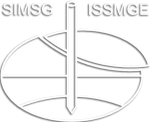Coastal erosion process at Calhetas parish, São Miguel island, Azores
Coastal erosion process at Calhetas parish, São Miguel island, Azores
The coastal cliffs on the north coast of the São Miguel Island, between Capelas and Rabo de Peixe parishes, due to its geology, composed by alternated fractured basaltic lava flows with breccia and/or unconsolidated pyroclastic deposits, are naturally predisposed to rock falls. Sea waves, meteorological agents and the anthropogenic activity that takes place near the cliffs are the main factors responsible for the erosive dynamics, with estimated retreat rates of up to 0.40 m/year. In this context, the urban settlements closest to the coastline are cyclically affected by landslides and rock falls. These geomorphological processes are responsible for the retreat of the cliffs, with the consequent loss of land, buildings and roads. Calhetas parish, in the municipality of Ribeira Grande, is one of those places that has recently been most affected by geomorphological instability. Since February 2023, a reactive phase of the cliff has been underway, with a consequent retreat of its crest. This paper describes the process that has affected this sector of São Miguel Island coast in recent years, with a particular focus on the phase that is currently underway. Displacements data are presented, obtained by fixed marks, as well as the measures that have been taken to mitigate the risk to the population. Finally, a discussion is presented on the solutions that are considered most appropriate for the problem.
Filipe Miguel Marques; Ana Maria M. A. P. Malheiro; P. Amaral; A. Santos; L. Cunha
18th European Conference on Soil Mechanics and Geotechnical Engineering (ECSMGE2024)
B - Geohazards
